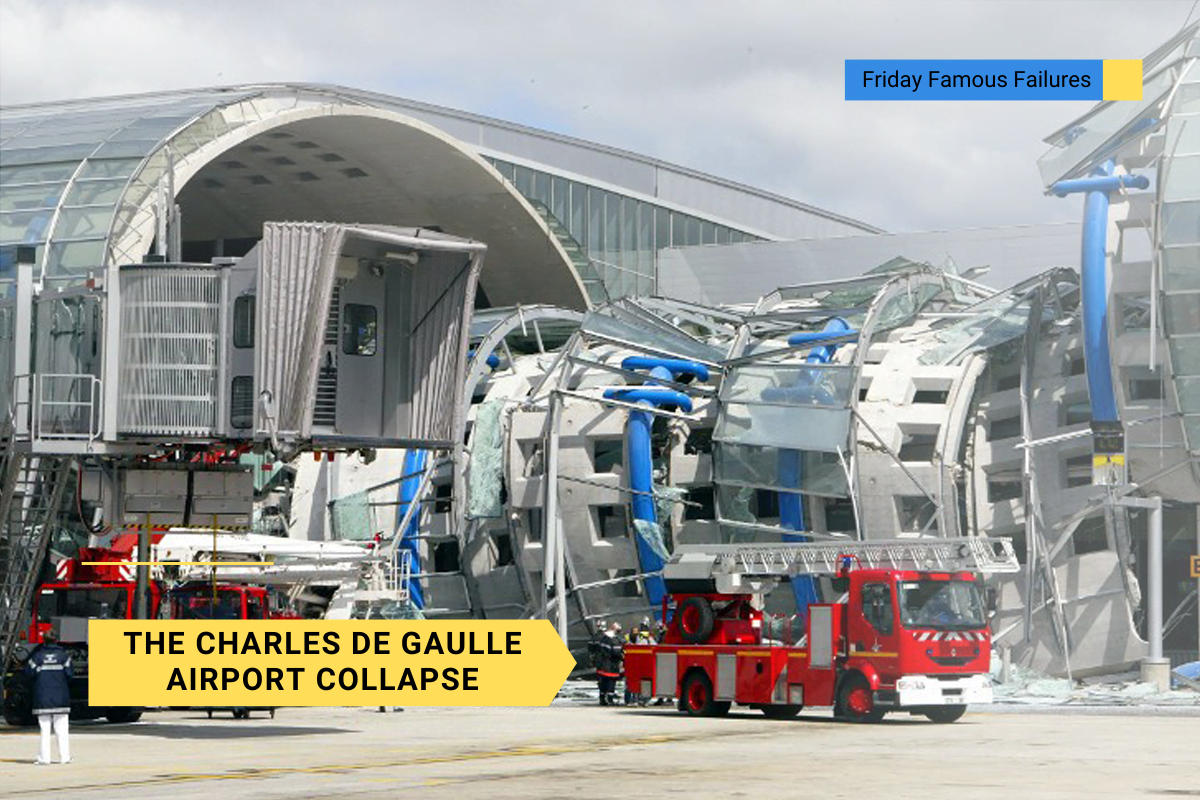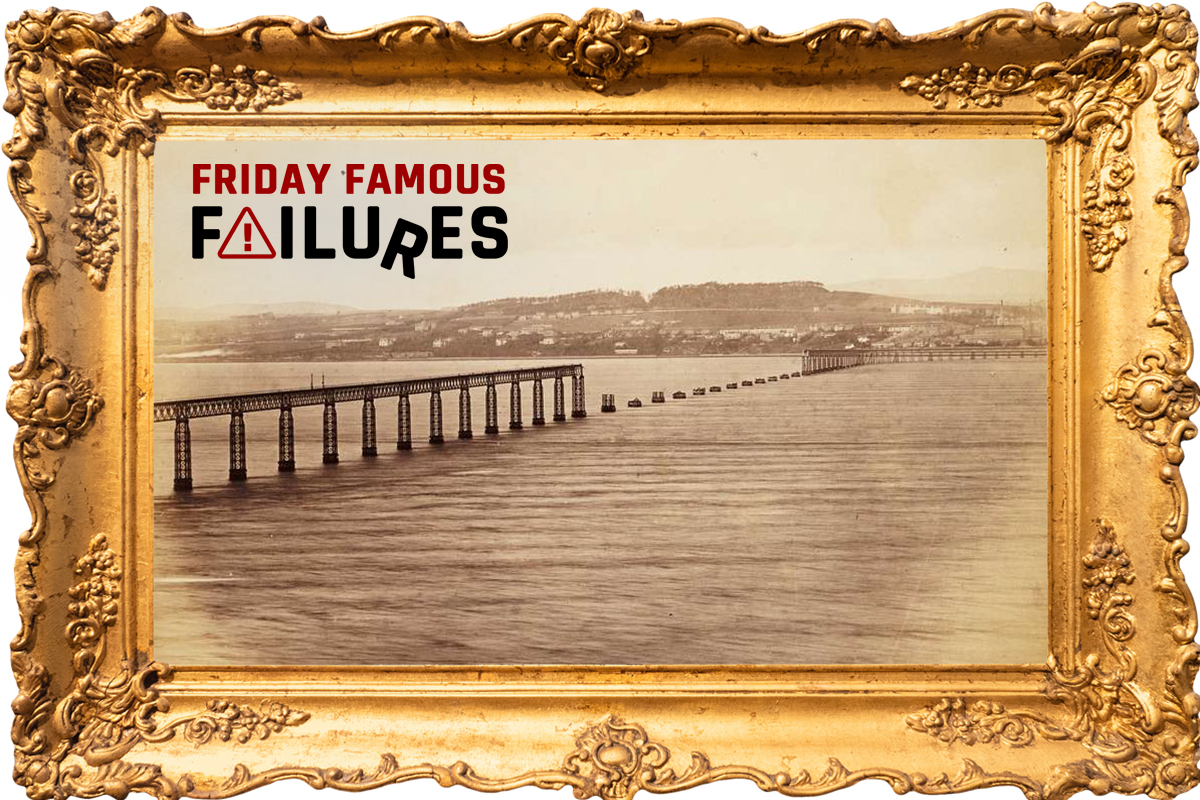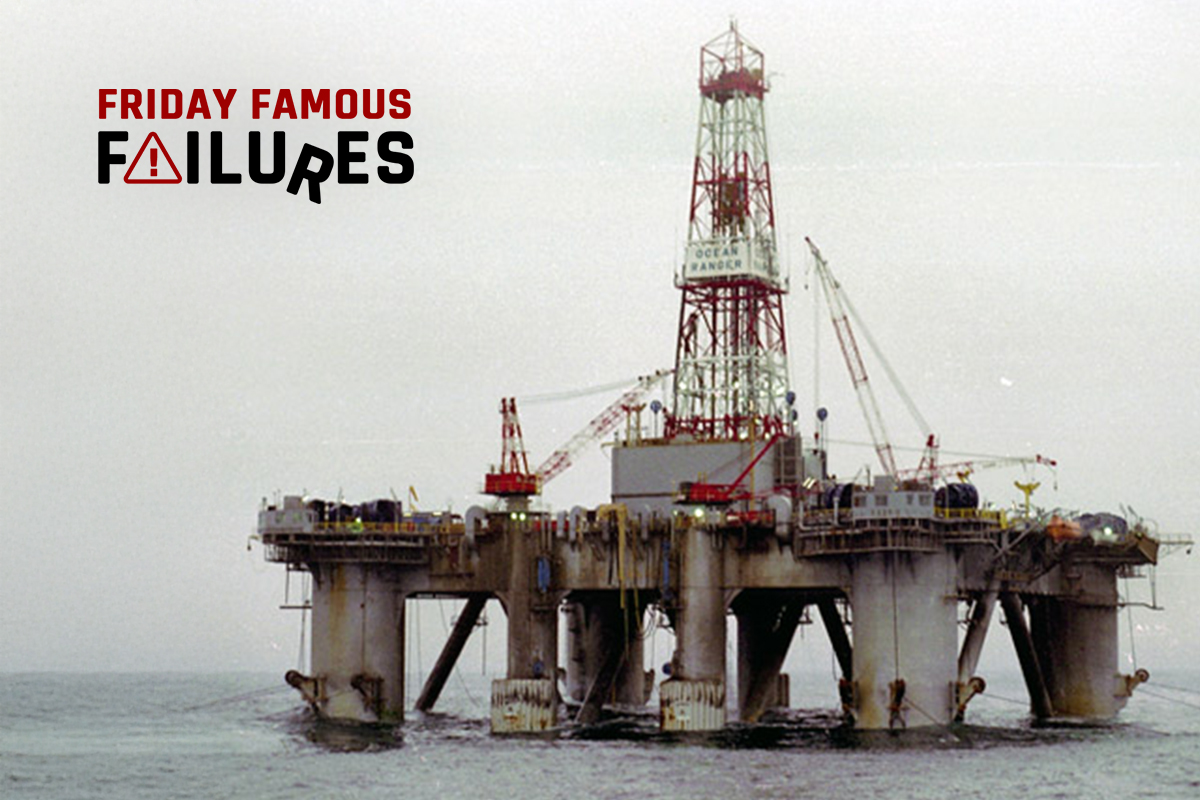The Charles de Gaulle Airport in Paris, France is the largest airport in France and the second busiest airport in Europe. Every year, millions of passengers and hundreds of thousands of flights depart and arrive at Charles de Gaulle to and from destinations around the world. On the early morning of May 23, 2004, passengers in terminal 2E were disembarking after arriving from flights from Johannesburg and Newark. Nearby, another flight was boarding for Prague. They were unaware of the imminent peril.
The first indication of impending disaster occurred when a strip of concrete fell from the underside of the shell of the building. Only ninety minutes later, two more devastating events occurred: the northern wall buckled and the struts pierced through. Then the edge beam of the ceiling collapsed. Passengers in the terminal reported concrete dust falling and saw fissures in the roof. They alerted the police, and three officers started to evacuate the building, but disaster was unavoidable. At 7:00 am, the cracked roof shattered; terminal 2E collapsed and imploded. The passengers inside were trapped under concrete and glass.
Rescue teams scrambled to uncover the victims from the wreckage. By late afternoon, a 300-ton crane was brought in to lift the heavy slabs of concrete while dogs had been brought in to search for bodies. At first, on-scene investigators approached the disaster without knowledge of the cause: was it terrorism, a bomb, or a structural failure? In all, two people from China and one each from Lebanon and Ukraine were killed. Seven were injured, including the officers sent to the terminal after passengers reported a crack in the building. Thankfully, the collapse did not occur during busy travel time; many were injured but only four perished. Had the terminal collapsed a few hours later, the death toll would have been far higher. How could such a marvel of engineering, completed only 11 months prior, have imploded in such a horrific fashion?
Famed French architect Paul Andreus designed terminal 2E. Andreus had an illustrious resume, which included designing the French terminal for the English Channel tunnel. The architect was more than familiar with the structures of Charles de Gaulle Airport. Educated as an engineer at the École Polytechnique and as an architect at the prestigious fine arts Lycée Louis-le-Grand, Andreus’ career revolved around airport design. The architect started working on designs for de Gaulle as early as 1974. Through the 1980s and 1990s, Andreus’ firm built multiple terminals in the busy Parisian airport.
The design for terminal 2E was ambitious and unique; Andreus drew upon the principles of tunnel construction to complete the space. Those who visited the terminal on their travels described the elliptical structure made of concrete rings as futuristic, practical, and beautiful. The structure relied on a uniquely engineered design of the outer shell to remain standing, eliminating roof supports and allowing passengers to move freely within the terminal.
Shortly after the collapse, an Administrative Investigation Committee investigated the cause of the disaster. The team cited two chief concerns from the collapse: process failure and structural engineering failure.
Process Failure: The Administration Investigation Committee determined that a lack of detailed analysis of the structure and inadequate design construction resulted in a poorly engineered structure. The report further suggested that the external reinforcement had been chosen based on its aesthetic appeal, rather than calculated engineering judgment. The committee also noted hasty construction, citing that the project’s construction phase was delayed one month due to technical problems as a result of failing to respect the normal construction rules, without real control over the consequences of the technical choices made.
Structural Engineering Failure: The report posited that a number of design flaws were missed during construction. The stresses and efforts calculated in the design phase were inaccurate; the load applied at the ultimate limit state was 4.5 times greater than the maximum permissible load. Moreover, the investigation found that the temperature outside may have led to the collapse and that variations in temperatures were not anticipated in the design phase. In the days prior to the collapse the variation in temperature ranged from 20 °C to 4 °C and led to additional stresses on the bridge shell.
A French court found the Paris airport operators guilty of involuntary manslaughter as a result of the terminal collapse. Aeroportes de Paris was ordered to pay the maximum fine of 225,000 euros by the court. In addition, three subcontractors, the construction company that built the vaulted glass and concrete roof, as well as engineering and inspection firms were ordered to pay fines of 100,00 to 150,00 euros.
As a result of the Charles de Gaulle Airport collapse, architects are aware that using new and more modern practices requires additional oversight by many professionals—architects, engineers, and contractors—who are all working from the same script. In this way, intentions and plans are not lost in the transition from design to structural engineering to construction. New York Times reporter Christopher Hawthorne summed this up when he wrote, “In other words, it is in translating the design from one office to the next that mistakes are amplified and become deadly.”









Sounds familiar, these people are not working as a team.
Sounds like the architect was the main source of the failure, but he wasn’t listed as one who was found guilty in the court!
There is often a conflict between the aesthetics of a design and the engineering function. This incident shows that while the engineer can make the best effort to support the aesthetics desired by the architect, the aesthetics become secondary to the engineering / life safety aspect of the design. No one ever died because a building wasn’t the work of art the architect wanted.